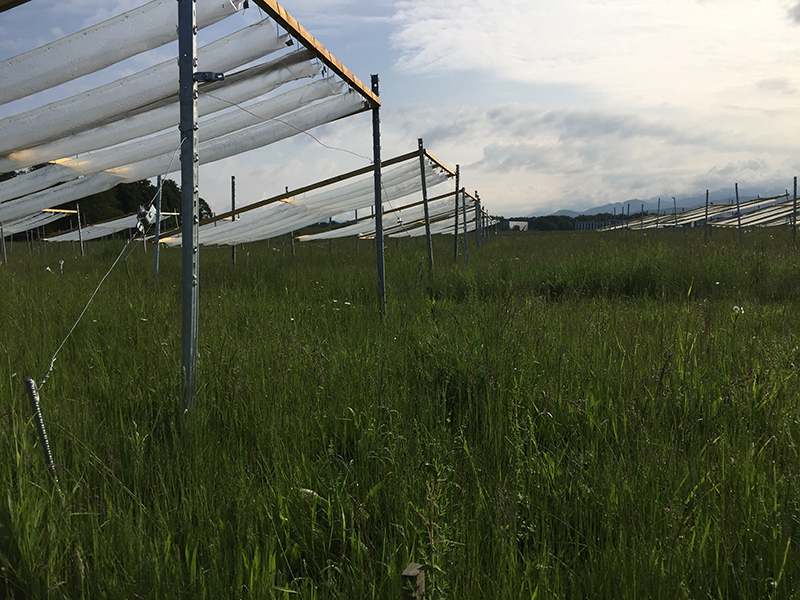Drought and its consequences for ecosystems around the world
Freiburg, Mar 22, 2024
How do different ecosystems react to drought? A worldwide network of researchers has been gathering data on this question since 2016. Over more than 100 measuring stations on six continents, they are measuring how well – if at all – plants continue to grow in extreme drought. In an article in the journal Proceedings of the National Academy of Sciences (PNAS) they have now published results from the first year of the experiment. Dr Angelika Kübert was among those contributing data. For her doctoral thesis at the University of Freiburg’s Institute of Earth and Environmental Sciences she studied the effects of drought on a site near the Technical Faculty. She received support for her work from her doctoral supervisor Professor Christiane Werner, Professor of Ecosystem Physiology, and from Dr Maren Dubbert. The research was carried out in close cooperation with Dr Tobias Gebauer and Professor Michael Scherer-Lorenzen from the Department of Geobotany.

Experimental setup in Freiburg. The roofs cover parts of the grassland to shield it from rain and thus simulate drought. Photo: Maren Dubbert
What is the current study actually about?
Angelika Kübert: The central objective of the international network is to collect data using a standardized method, so as to compare the effects of drought on different ecosystems. The experimental setup is the same in all the measuring stations: a roof covers parts of grassland or scrubland, so that less rain falls there. The proportion of the area covered by the roof was determined in each case by the researchers according to local rainfall statistics: in each place they simulated a drought that would statistically occur there once every hundred years.
Christiane Werner: Since the setup is relatively simple, this project was manageable with limited funds. This was the only way for such a large international network to be established at all.
What did you do in your research here in Freiburg?
Kübert: I took measurements for over three years on grassland near the Freiburg airfield. Firstly, I used the aforementioned experimental setup there and noted how many plants of what kind grew on the covered areas, the ‘drought areas’. I compared this with the control areas on the same site. In addition I also studied the carbon flow in more detail.
Why is the carbon flow an interesting quantity?
Kübert: It doesn’t just depend on the pure quantity of plants, but also changes with the activity of microorganisms in the ecosystem. While plants draw carbon dioxide (CO2)from the air, microorganisms process dead plants and emit CO2. Extremes of weather such as drought can however cause the CO2 intake to reduce drastically. This is especially the case in nitrogen-laden grassland, because nitrogen from fertilizers or from the atmosphere changes the biotic community of the grassland.
What are the key findings of the study and your research?
Werner: Extreme drought is leading to plants not growing as well worldwide. In some regions colleagues have observed drops of up to 60% in the biomass. At the same time, we are seeing regional differences: species-rich areas are more resistant. The drier the climate zone, the more vulnerable the areas observed here were to harm from drought.
Kübert: In my measurements in Freiburg I showed that a combination of a large nitrogen load and extreme drought can turn a green CO2 sink into a CO2 source. The nitrogen reduced the variety of species and the frequency of certain species, particularly herbaceous plants. The other gramineous plants generally have shallower roots and therefore absorb water and nutrients less efficiently. So they wither faster in a drought. As a result, the microorganisms in the ecosystem produce more CO2 than the plants can absorb.
Werner: Both the data from around the world and the results from Freiburg emphasize how complex ecosystem processes are. Climate change is causing very many factors to change simultaneously, and this has effects at several interlinked levels. So in future it will be even more important to work together interdisciplinarily and internationally.
Interview: Verena Krall

